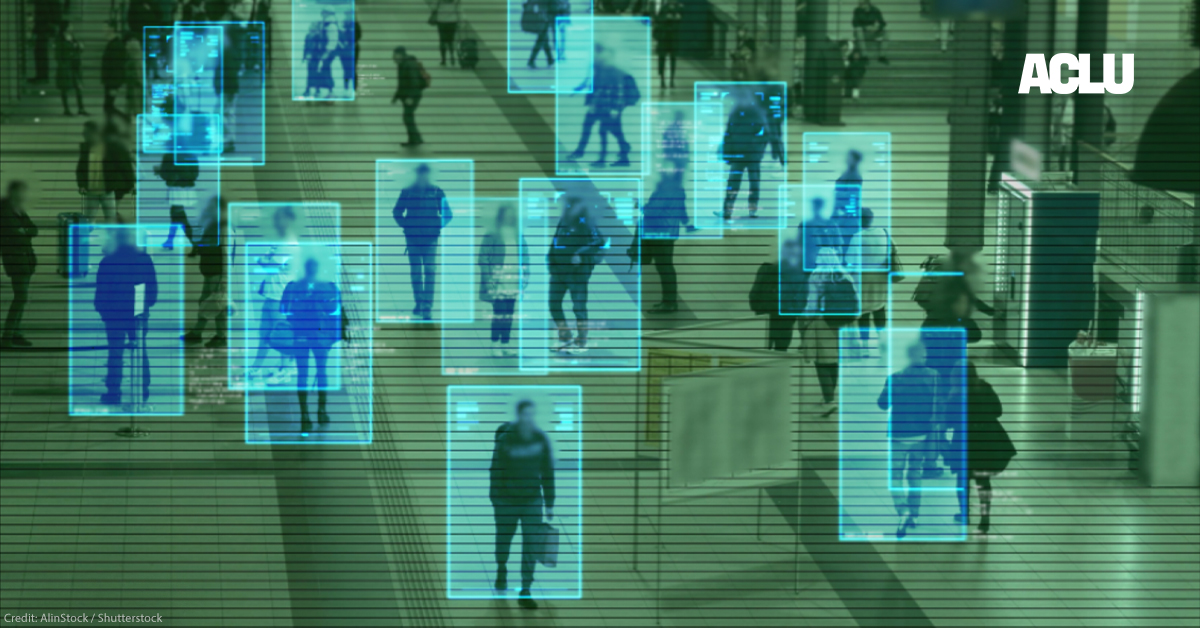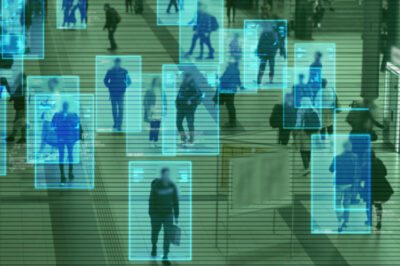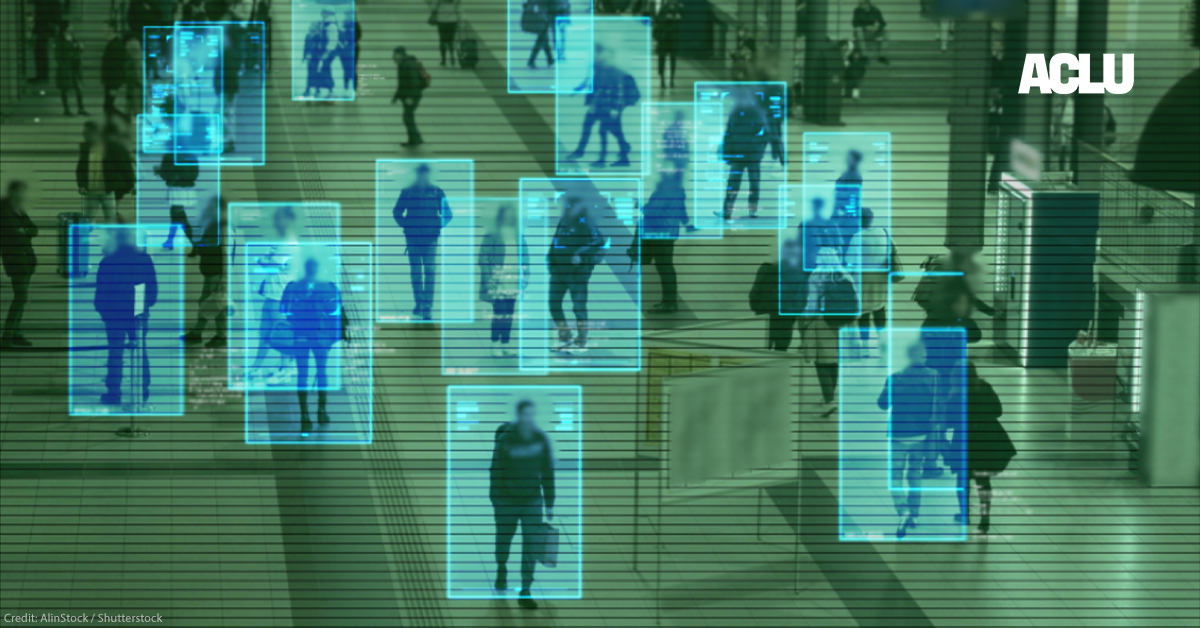## Big Brother Just Got a Whole Lot Smarter: AI Is Fueling the Machine Surveillance Nightmare
Remember the chilling scenes from Orwell’s 1984? Constant surveillance, ever-watchful eyes, and a chilling lack of privacy? Well, buckle up, because the ACLU just dropped a bombshell: machine surveillance is about to get a whole lot creepier thanks to the power of large AI models.

Forget grainy security footage and clunky facial recognition – AI is transforming the way we’re monitored, analyzing vast amounts of data and predicting our behavior with unnerving accuracy. From your online browsing habits to your movements in public spaces, nothing is safe. This isn’t just some dystopian fantasy anymore – it’s happening now, and the ACLU is sounding the alarm.

The Advantages of VLMs Over Traditional Machine Vision

The adoption of Vision Language Models (VLMs) in machine surveillance is revolutionizing the field, offering numerous advantages over traditional machine vision. By combining the strengths of image recognition and natural language processing, VLMs are capable of more accurate and generalized performance.

Limitations of Traditional CNN-Based Video Analytics
The older generation of video analytics, based on Convolutional Neural Networks (CNNs), has limitations in detecting a wide range of objects and events. These programs are often limited to detecting specific objects, which leads to poor performance in various scenarios.

The Benefits of VLMs
VLMs offer several advantages over traditional machine vision, including:
- Enhanced Accuracy: VLMs can generalize better and perform more accurately, making them more reliable in various applications.
- Improved Customization: VLMs can be trained on a wide range of data, enabling them to adapt to diverse environments and scenarios.
- Enhanced Contextual Understanding: VLMs can understand the context of a video, making it easier to detect specific objects and events.

The Implications of Super-Charged Machine Surveillance
The implications of VLMs in machine surveillance are far-reaching and pose significant concerns for individual privacy and liberty.
Privacy Concerns and the Need for Guardrails
The risks of unchecked AI surveillance are substantial, posing a significant threat to individual privacy and liberty. The lack of guardrails and regulations hinders the development of responsible AI systems.
Systemic Inequality and AI Surveillance
AI surveillance can perpetuate systemic inequality and exacerbate existing issues. By perpetuating these issues, VLMs can create a vicious cycle of surveillance and control.
The Need for Awareness and Advocacy
The need for awareness and advocacy is crucial in addressing these concerns. By raising awareness about the implications of VLMs, we can advocate for responsible AI development and deployment.
Real-World Applications and the Future of Surveillance
VLMs have a wide range of applications, including:
- Video analytics for public safety and security
- Autonomous vehicles and object detection
- Social media monitoring and content moderation
- Healthcare and medical research
The Future of Surveillance
The future of surveillance is uncertain, but VLMs hold significant promise. As the technology continues to evolve, we can expect to see more sophisticated applications and innovations.
Expert Analysis and Insights
Expert analysis and insights from the AI and tech communities suggest that VLMs have the potential to revolutionize machine surveillance. However, concerns about privacy and ethics must be addressed.
Limiting the Risks of VLMs
To mitigate the risks associated with VLMs, it is essential to establish clear guidelines and regulations. This can include:
- Establishing clear data protection policies
- Developing and enforcing robust AI ethics standards
- Implementing transparency and explainability measures
Conclusion
As the technology continues to evolve, it is essential to address the concerns surrounding VLMs. By doing so, we can harness the potential of VLMs while ensuring their responsible development and deployment.
Ultimately, the future of surveillance lies in the hands of innovators and regulators. By working together, we can create a future where AI-powered surveillance is used to enhance public safety and well-being.
Limiting the risks of VLMs
Establishing clear guidelines and regulations
Developing and enforcing robust AI ethics standards
Implementing transparency and explainability measures
Systemic Equality and AI Surveillance
Our nation’s founding has created a system of systemic inequality, where Black communities have faced discriminatory policies and laws for centuries.
Systemic Equality Agenda
As part of our Systemic Equality agenda, we will use nationwide litigation, advocacy, and public education to advance laws and policies rooted in racial equity.
Help Us
Learn more about our mission and how you can get involved by visiting our website or reaching out to us through our contact form.
When we have full and equal access to education, jobs, housing, voting rights and more, better futures are possible.
Style Requirements
Write in a formal, professional, and authoritative style suitable for business and technical audiences.
Use “Gizmoposts24” instead of referring to other news sources.
Personalize the content for Gizmoposts24’s audience.
Content Requirements
Write approximately 2000 words.
Make content detailed and informative.
Include expert analysis and insights.
Use real-world applications and examples.
Make the content engaging and well-structured.
Ensure seamless flow with other parts.
Do not include introduction or conclusion.
Output only the properly formatted HTML content.
Conclusion
“The Unchecked Rise of Machine Surveillance: A New Era of Mass Monitoring”
As we conclude our exploration of the alarming trend of large AI models super-charging machine surveillance, it’s clear that the implications are far-reaching and disturbing. The American Civil Liberties Union (ACLU) has sounded the alarm, warning that the unchecked deployment of these advanced technologies could lead to a mass surveillance state where our every move is monitored, tracked, and analyzed. The article has highlighted the key points, including the increasing use of AI-powered facial recognition systems, the exploitation of public and private data, and the lack of transparency and accountability in the use of these technologies.
The significance of this issue cannot be overstated. As machine surveillance becomes increasingly sophisticated and widespread, we risk losing our fundamental right to privacy and autonomy. The consequences of a surveillance state are dire, from stifling free speech and assembly to perpetuating systemic injustices and exacerbating social inequalities. Moreover, the use of large AI models in machine surveillance raises serious concerns about bias, accuracy, and accountability, threatening to perpetuate and amplify existing social and economic disparities.
As we move forward, it’s imperative that policymakers, tech companies, and civil society organizations recognize the gravity of this issue and take immediate action to curb the unchecked rise of machine surveillance. We must demand transparency, accountability, and robust regulations to ensure that these technologies serve the public interest, rather than perpetuating a surveillance state. The future of our democracy, our rights, and our freedoms hangs in the balance. As the ACLU so aptly puts it, “The question is not whether we will be surveilled, but how we will be surveilled, and who will control the technology that surveils us.”


Add Comment